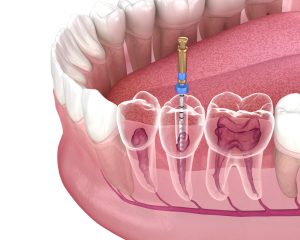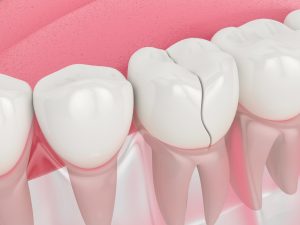Surgical and Non-Surgical Root Canals: What You Need to Know
If you have a damaged or infected tooth, a root canal may be necessary to save it. At the dental practice of West Sayville dentist, Dr. Richard Sigismondi, we offer both surgical and non-surgical root canal procedures to help our patients save teeth from extraction and ensure they can smile without pain. Learn more about surgical root canals and non-surgical root canals and how these procedures can improve your oral health. Call our Long Island, NY, dental practice at 631-563-1583.
What Are Surgical and Non-Surgical Root Canals?
A root canal is a dental procedure that involves removing the infected or damaged pulp from the inside of a tooth. A non-surgical root canal is the most common type and involves accessing the pulp through the top of the tooth.
A surgical root canal also called an apicoectomy, on the other hand, is a slightly more invasive procedure that accesses the pulp through the gum tissue. This means Dr. Sigismondi will make a small incision to reach the infection. Surgical root canals are often utilized if non-surgical root canals fail the first time.
Benefits of Surgical and Non-Surgical Root Canals
Saves the Natural Tooth
One of the primary benefits of both surgical and non-surgical root canals is they aim to save the natural tooth. By removing the infected or damaged pulp and cleaning the inside of the tooth, the dentist can preserve the tooth structure. This is important because keeping your natural teeth can help maintain your natural smile, allow you to continue eating the foods you love, and limit the need for ongoing dental work
Relieves Pain and Discomfort
Root canals are often performed to alleviate tooth pain and discomfort caused by infection or damage to the dental pulp. The procedure involves removing the source of the pain, which can provide significant relief. Additionally, modern techniques and anesthesia make root canal treatment virtually painless, and the discomfort during recovery is often less compared to tooth extraction
Prevents Further Infection or Damage
Root canals are an effective way to prevent further infection or damage to the tooth. By removing the infected pulp and sealing the tooth with a filling or crown, the dentist creates a barrier that prevents bacteria from re-entering the tooth. This helps to halt the progression of the infection and protect the tooth from further damage
Restores Oral Health and Function
Root canals restore oral health and function by eliminating infection, relieving pain, and preserving the natural tooth. Once the root canal procedure is completed, the tooth can continue to function like any other tooth. With proper care, most teeth that have undergone root canal treatment can last a lifetime, allowing you to maintain a healthy and functional smile
Signs You Need a Surgical or Non-Surgical Root Canal
Signs that you may need a surgical or non-surgical root canal can vary, but here are some common indicators to look out for:
- Persistent Tooth Pain: If you experience continuous or intermittent tooth pain, it could be a sign the tooth’s pulp is infected or damaged. The pain may range from a dull ache to intense and sharp sensations
- Swollen gums: Swelling or tenderness in the gums around a specific tooth can indicate an underlying infection that may require a root canal
- Tooth Sensitivity: Increased sensitivity to hot or cold temperatures, especially when the sensitivity lingers even after the stimulus is removed, can be a sign of pulp inflammation or infection
- Tooth Discoloration: Discoloration of a tooth, such as darkening or graying, may indicate the tooth’s pulp is compromised and a root canal may be necessary
- Cracked or Damaged Tooth: A tooth that is cracked, fractured, or has suffered trauma may require a root canal to address the damage and prevent further complications
- Pus or Abscess: The presence of pus or a pimple-like bump on the gums near the affected tooth can indicate an infection that may necessitate root canals
It’s important to note these signs are not definitive proof a root canal is needed. Only a qualified dentist can accurately diagnose the need for a root canal through professional examination and diagnostic methods such as X-rays. If you experience any of these symptoms, schedule an appointment with Dr. Sigismondi as soon as possible to receive a proper evaluation and appropriate treatment.
The Surgical and Non-Surgical Root Canal Process
Consultation
Before you’re approved for either surgical or non-surgical root canal therapy, you’ll have an initial consultation with Dr. Sigismondi. During the consultation, he’ll examine your mouth and take X-rays to determine the extent of the damage or infection. He will also discuss the different types of root canals available and help you choose the best option for your needs.
Treatment Planning
If Dr. Sigismondi has approved you for a root canal or an apicoectomy, he’ll work with you to design a treatment plan that addresses your specific needs. He’ll also explain the procedure and answer any questions you may have.
Surgical or Non-surgical Root Canal Treatment
Before the root canal procedure, we’ll numb the area around the tooth to be treated. We also provide sedation dentistry options to help you relax and make you further numb you to any pain or discomfort. Once we’re sure you’re numb, Dr. Sigismondi will remove the infected or damaged pulp from the inside of the tooth.
For a surgical root canal, he’ll make a small incision in the gum tissue to access the pulp. He’ll then clean and disinfect the tooth before filling it with a special material to prevent further infection. In some cases, a crown will be placed to help reinforce the tooth.
Follow-Up
After the procedure, your West Sayville dentist will provide you with instructions on how to care for your tooth and what to expect during the healing process. You may need to schedule a follow-up appointment to ensure the tooth is healing properly.
Caring for Your Tooth After a Root Canal
To help ensure your treatment doesn’t fail, Dr. Sigismondi recommends the following:
- Avoid Hard or Crunchy Foods: Avoid hard or crunchy foods that can damage the temporary filling or crown placed on the tooth. Opt for soft foods that don’t require much chewing such as pudding, applesauce, and some soups
- Brush and Floss Regularly: Brush and floss your teeth twice a day and use mouthwash to prevent infection and promote healing
- Take Pain Medication as Prescribed: Your West Sayville dentist will prescribe medication to help manage any pain you may experience. Take the medication as prescribed and contact your dentist if the pain persists
- Avoid Chewing on the Treated Tooth: After a root canal procedure, the tooth may be sensitive and vulnerable to damage. Avoid chewing or biting down on the treated tooth until it is fully restored by a dentist
- Follow up With Your Dentist: It is important to follow up with Dr. Sigismondi after a root canal procedure. He will check your tooth and suggest the best solutions to avoid any complications.
Frequently Asked Questions
No, neither a surgical nor non-surgical root canal should not be painful. Your dentist will numb the area around the tooth before the procedure to ensure you are comfortable. You should also ask your dentist if they offer sedation options.
The duration of a non-surgical root canal typically involves one to two appointments, with each appointment lasting about 60 to 90 minutes. A surgical root canal, on the other hand, can range from 30 minutes to an hour. However, the exact timeframe may vary depending on the complexity of the case. Your dentist will provide a more accurate estimate based on your specific situation.
With proper care, a tooth that has had a root canal can last a lifetime. Maintaining good oral hygiene is essential after a root canal procedure. You should also visit your dentist at least twice a year for regular dental exams.
Yes, you can get a root canal if you have braces. However, the procedure may be more challenging for the dentist due to the presence of the braces. Your dentist may need to work around the brackets and wires to access the tooth, but the procedure can still be performed successfully.




